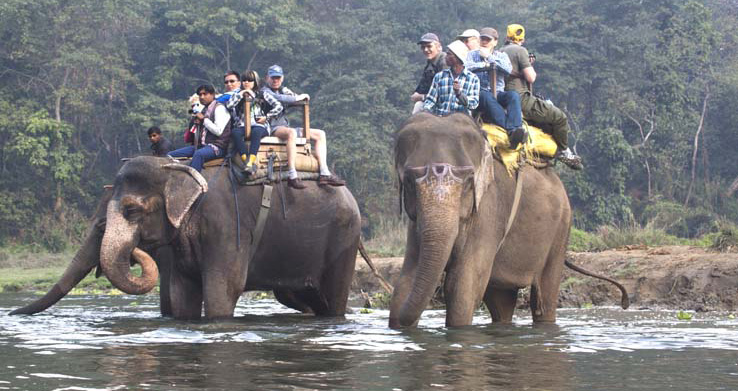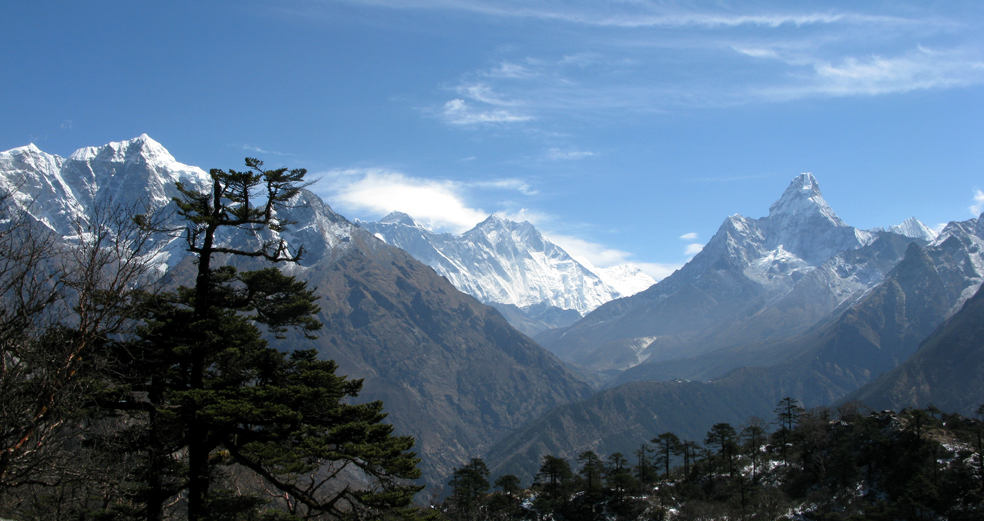Activity
Himalayan Wildlife
First, some amazing statistics! Nepal - occupying only 0.1% of the earth - is home to: 2% of all the flowering plants in the world, 8% of the world's population of birds (more than 848 species), 4% of mammals on earth, 11 of the world's 15 families of butterflies (more than 500 species), 600 indigenous plant families, 319 species of exotic orchids
As these statistics indicate, Nepal has a remarkably wide range of flora and fauna, particularly given its small size. This ...
Show More
species richness can in part be attributed to Nepal's very diverse climate and topography. The altitudinal variation is greater than in any other country, ranging from just above sea level to the loftiest point on this earth, the summit of Mount Everest. In the lowlands, such as in the Royal Chitwan National Park, there are tropical forests, which support the greatest number of species. Here may be found some of the Indian sub-continent's large mammals, including the one-horned Rhinoceros and the Bengal tiger. At the other end of the scale is the alpine zone of the high Himal, where may be found the smallest number of species, including the Tibetan snow cock, a large gamebird that normally summers above 4500m. Another important influencing factor contributing to the country's species richness is its position, where the Oriental and Palearctic biogeographic realms overlap. Dominant in the Himalaya are Palearctic species such as those which originate in Northern Asia and Europe - birds such as accentors, rosefinches and redstarts, and flowers like primulas, edelweiss and gentians in the alpine grasslands. The tropical and sub-tropical zones of southern Nepal are home to Oriental species such as the hornbill which feeds on fruit from the large forest canopy trees, and the pitta which searches the forest floor for its food, while huge, bright butterflies, including yellow and black birdwings, flutter around.
When visiting Nepal to observe plants and animals it is as well to heed the following information:
Flowers (phul) - In the Himalaya the main flowering season is from mid-March to the end of May, while the months from November to late March is a good time to see flowering plants in the lowlands.
Birds (charo) - Mid-March to the end of May is the optimum period for birds, because many summer visitors and residents are at a peak of activity. On high-altitude treks, such as Langtang and Solu Khumbu, May is the best time to watch birds. Although late April is extremely hot, it is a very exciting time for birdwatching in lowland forests such as Chitwan, because a few winter visitors still remain to be seen, most summer visitors have already arrived and numerous migrants are passing through en route to the hills. The period between December and mid-March is a good one for Nepal's numerous winter bird visitors and passage migrants which fly south along the Himalayan valleys. Remember that most birds are active in the early morning and that their activities are affected by the sun. Birds will move into slopes bathed in sunshine in preference to shady ones, except during midday periods when they tend to be less active.
Mammals (janaawar) - Mammals may be seen throughout the year, although in the protected, lowland forests of Chitwan, Sukla Phanta and Bardia, the preferred months are March to May when the post-burning regeneration .of grasses attracts many herbivores and their attendant predators.
In Nepal, mammals are more difficult to see than birds because many of them are nocturnally active and silent. The best time to look for them is the period after sunrise (the first two or three hours) when the animals are often still active and when you are least likely to be disturbed by others on the trail. Try to camouflage yourself in suitably muted colours - browns and greens in forests, and pale gear in the snow-covered Himalaya. Walk slowly and quietly. Always remember that all the large carnivores, the rhinoceros and the sloth bear are potentially dangerous and should never be approached.
Insects (kira) - June to September is the best time for insects, but the rains of the monsoon will make it not too easy to find them. Many kinds of insects may be seen at other times - for example lots of butterflies (putali) emerge in March and April and by May and June their numbers will be at a peak.
Jungle Safari Holidays
The Terai is the southernmost region of Nepal - an extension of the Gangetic plains of India and mostly below 70m above sea level - a complete contrast to the towering 8000m peaks of the northern border only 200km away! A century ago the Terai was famous as the destination of Maharajahs and Princes who, supported by guides, servants and elephants, travelled in luxury in search of tiger, rhino and leopard, for this jungle was one of the world's most abundant hunting grounds. Today, in search of wild animals, you may still ride elephants through some of Asia's last remaining examples of primeval forest, some of which were once royal hunting domains, but are now protected jungle reserves where you will be armed with cameras instead of weapons! As well as, or instead of, by elephant-back, you may see the wildlife of the reserves by jeep, landrover, dugout canoe or "Shanks's pony", where appropriate.
Show Less






